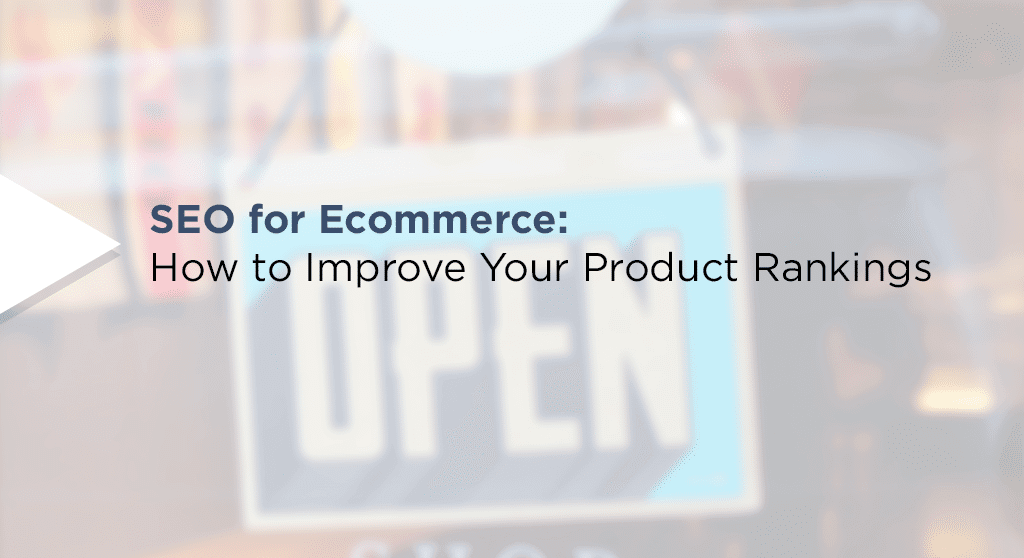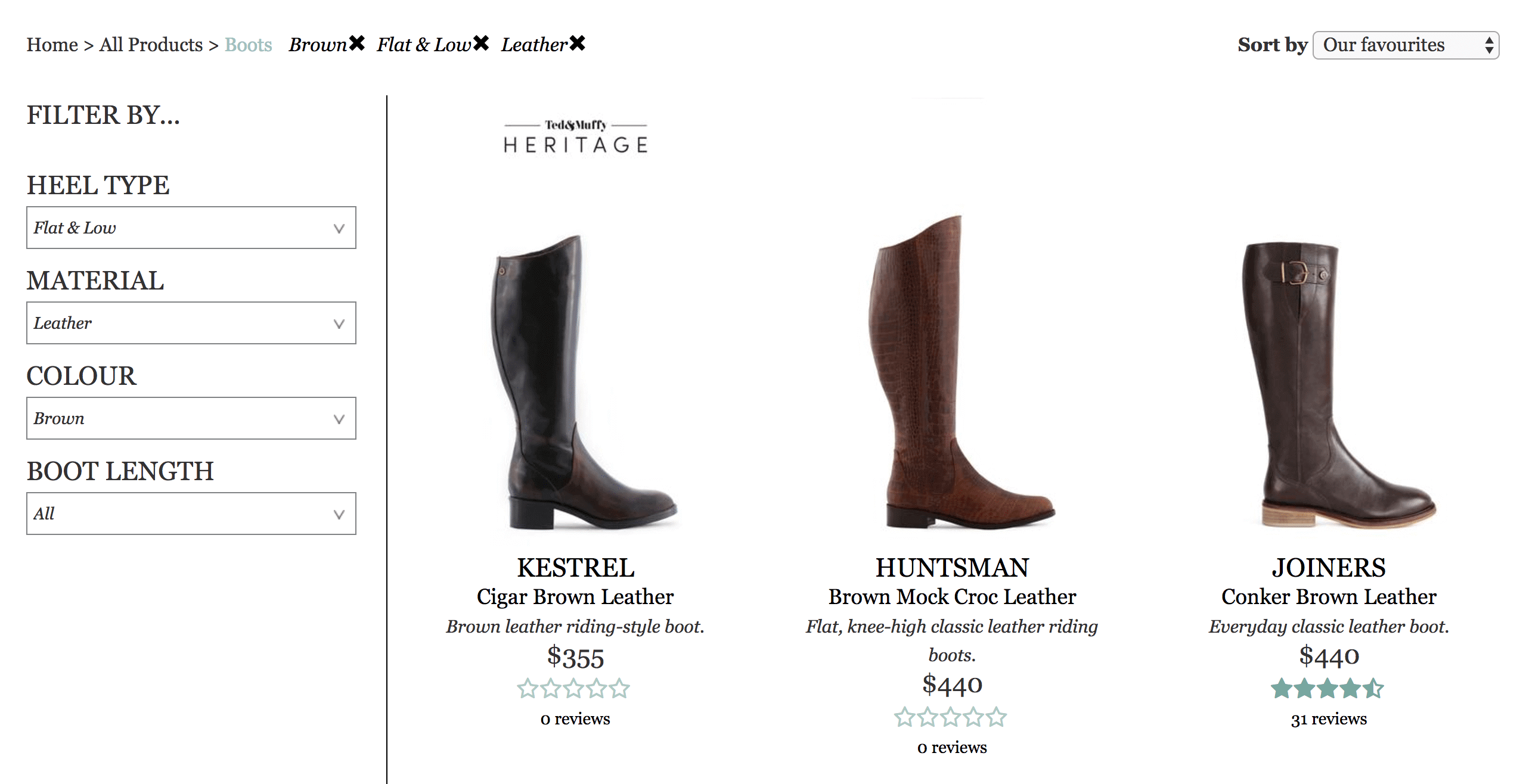
SEO for ecommerce is like SEO for everyone else, with a few extra rules.
Ecommerce has a few unique challenges when it comes to following good SEO practices. Unlike other websites that have relatively static pages, ecommerce stores have an inventory to manage—and that means products come and go on a regular basis. Ecommerce sites typically also have far more pages, meaning more to manage and more to optimize.
Many SEO rules apply to ecommerce just the same as they would to other businesses. Good optimization, quality content, and keyword research will go a long way. But there are some specific areas where you can adjust your tactics to optimize your product pages for the best search engine results. Here are our top tips.
Establish good site structure.
Let’s say you sell fine leather shoes. When someone comes to your site, they will expect to search your products according to a few basic parameters, such as men and women’s shoes. Your visitor picks one (let’s say women’s shoes), and is offered further refinement options. Do they want boots or dress shoes? Heels or flats? You visitors should be able to easily navigate the product categories, and find their way back to wherever they were before.
The best way to prevent your visitors from becoming lost is to implement breadcrumbs. These show your visitors the site path they followed to end up on a particular page.

In this example, from shoe retailer Ted & Muffy, you can see the breadcrumbs as well search restrictions in the upper left corner. To find this selection of boots, I went from the home page, to the product page, to “boots.” Then I filtered my results to show only brown, flat-heeled, leather boots.
Use unique title tags wisely.
Do you use the same title tags for every product? Search engines base part of their rankings on your title tags. If you use the same phrase for every product, then they won’t know what to rank first. However, with so many products, coming up with a unique title tag for each can be daunting.
The best strategy is to create a formula that will help you ensure unique title tags for every product. For instance, you could start with the brand, followed by the model and the item type, as in:
Tan Leather Oxfords | Example Shoe Store
Black Leather Oxfords | Example Shoe Store
This formula will help ensure your title tags are always unique without complicating the process on your end by making you invent creative titles for each item.
Optimize product categories.
I used the title tag example because the last time I bought shoes this was the specific product I had in mind, and it’s what I typed into my search engine: women’s tan leather Oxfords. I searched around a lot before I found what I wanted, but in the process I discovered some excellent ecommerce stores. The best stores understood the difference between the product categories and the product pages, and didn’t optimize them in the same way.
What do I mean? Well, I had a really good idea of the kind of shoe I wanted. But I was also interested in finding some high-quality ecommerce shoe stores. This meant that I spent a while searching for other phrases, such as “fine leather shoes,” and “genuine leather shoes,” and “full leather shoes,” and “ethically produced fine leather shoes”—you get the point.
Now, some stores treat each individual product page as if it should rank for those key phrases. The problem with this strategy is that all of these pages compete with each other. If you have “genuine leather shoes” written all over your product page for your tan leather oxfords, and your calf-length riding boots, and your ergonomic summer sandals, then Google spits traffic among them equally.
On the other hand, if you optimize your category page for these terms, then you can optimize the product pages for the long-tail phrases. When I search “women’s fine leather shoes,” I’ll land on the product page showing your entire selection of wares. When I search for “women’s tan leather Oxfords,” I’ll end up on the product page for tan leather Oxfords.
301 redirects for discontinued products.
When you discontinue a product, what do you do with its old page? Many businesses simply delete the page. But what happens when a visitor follows an old link? If your page is gone, all they see is a 404 error telling them the page doesn’t exist. That loses traffic for you, and it makes your business look unprofessional.
Instead, use 301 redirects to tell Google that the page has permanently moved. Google forwards the user on to the new page, and that new page retains the traffic. So if you discontinue a pair of shoes, links to the old she product page can redirect to the category page where visitors can look for other shoes instead. And if you change sites, move pages, or re-arrange your site architecture, 301 redirects can prevent you from losing all the good authority your pages accumulated over the years.
Usability and mobile.
Like any website, usability and mobile friendliness will have a big impact on your ability to serve your customers and covert sales on your store. Ecommerce stores are more complicated than marketing websites, so pay special attention to how your users interact with the site. The higher your visitor retention scores are, the more favorably Google will rank you.
This holds true for your mobile site as well. More and more users expect to be able to purchase from their mobile phone without any issues from a usability perspective. To make sure your design is mobile friendly, follow responsive design principles so that users won’t have to scroll sideways to see the whole page. Text should be readable without having to zoom, and links should be spaced far enough apart so that users can easily tap them without accidentally tapping the wrong button.
Keep up your SEO for ecommerce best practices and witness the results.
As we said, many SEO principles are the same for ecommerce as for other websites. With good keyword research, quality content, and optimized backend data, you should see your site rankings continue to improve.